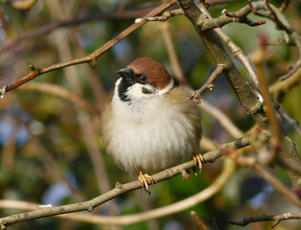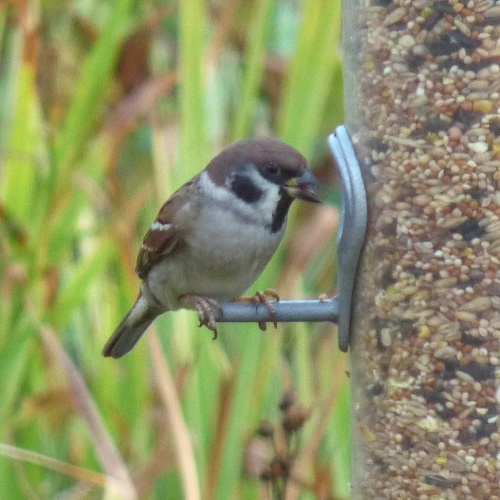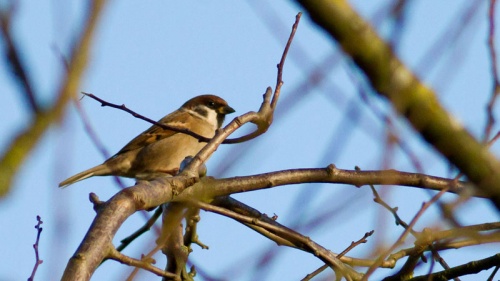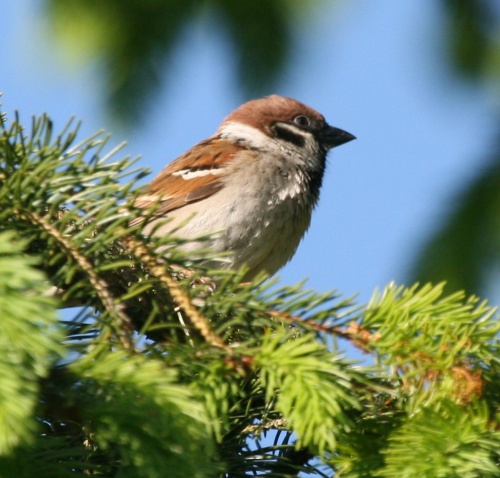Tree Sparrow - Passer montanus
Smaller than a House Sparrow, it has a chestnut brown head and nape (rather than grey), and white cheeks and collar with a contrasting black cheek-spot. The sexes have identical plumage. They are shyer than House Sparrows in the UK and are not associated with man, although in continental Europe they nest in buildings just like House Sparrows. The main populations are now found across the Midlands and southern and eastern England. It is almost absent from Wales and from the south west and north west of England.
Best looked for in hedgerows and woodland edges.
All year round
The Tree Sparrow's untidy nest is built in a natural cavity, a hole in a building or bird box. It is predominantly a seed and grain eating bird which feeds on the ground in flocks but it does eat invertebrates, particularly during the breeding season.
Found throughout most of Britain, but more scarce in northern Scotland and south west England.
A fairly common breeding bird in Leicestershire and Rutland.
Leicestershire & Rutland Map
Enter a town or village to see local records
MAP KEY:
Yellow squares = NBN records (all known data)
Coloured circles = NatureSpot records: 2020+ | 2015-2019 | pre-2015
UK Map
Species profile
- Common names
- Tree Sparrow, Eurasian Tree Sparrow
- Species group:
- Birds
- Kingdom:
- Animalia
- Order:
- Passeriformes
- Family:
- Passeridae
- Records on NatureSpot:
- 103
- First record:
- 16/11/2005 (Semper, Alan)
- Last record:
- 05/07/2023 (Dickens, Tracy)
Total records by month
% of records within its species group
10km squares with records
The latest images and records displayed below include those awaiting verification checks so we cannot guarantee that every identification is correct. Once accepted, the record displays a green tick.
In the Latest Records section, click on the header to sort A-Z, and again to sort Z-A. Use the header boxes to filter the list.





